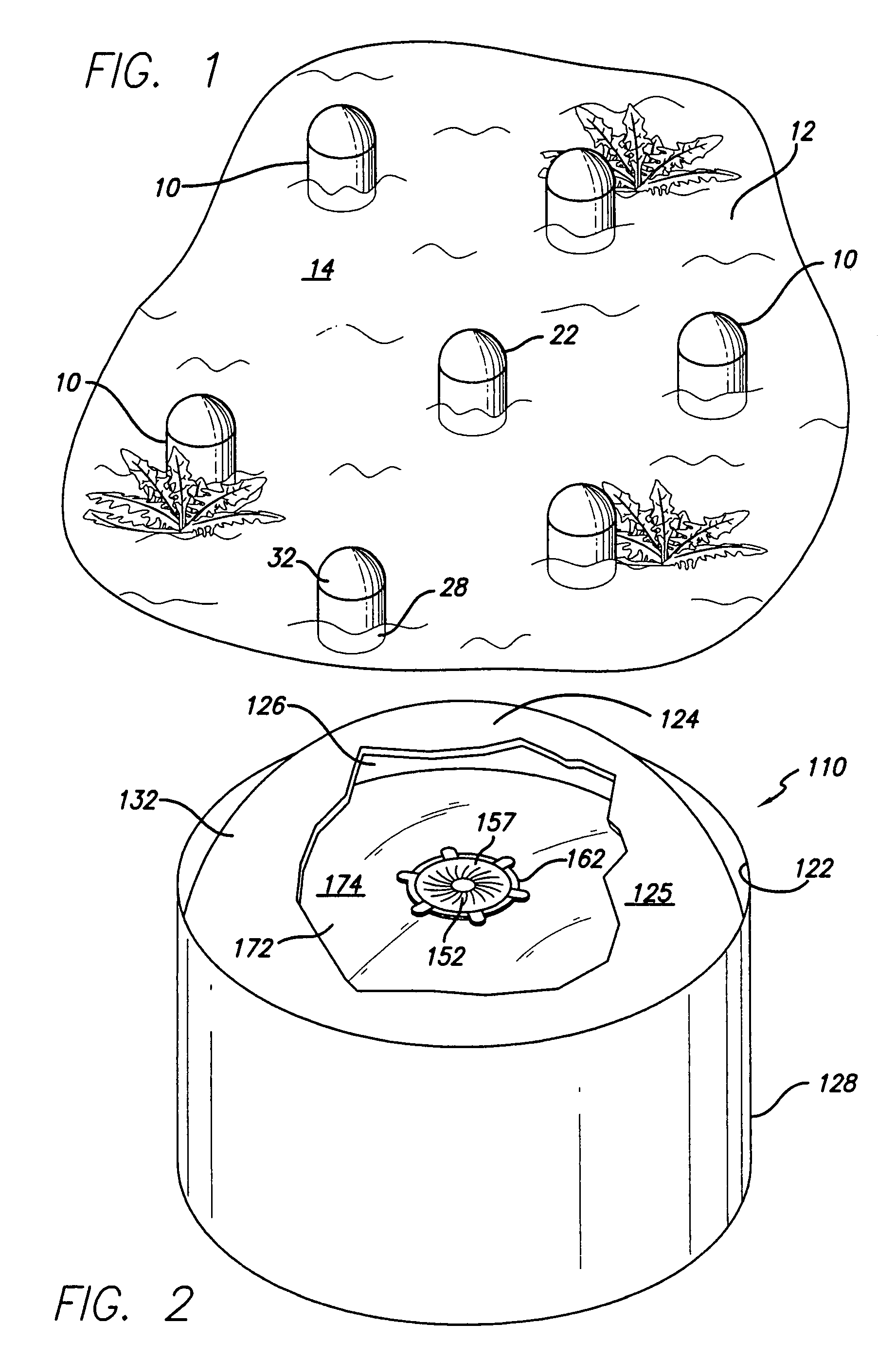Multi-unit, distributive, regenerable, in situ desalination method
- Summary
- Abstract
- Description
- Claims
- Application Information
AI Technical Summary
Benefits of technology
Problems solved by technology
Method used
Image
Examples
Embodiment Construction
[0032]In accordance with the invention, water such as standing cultivated field water is desalinated by a series of independent units that float on the water surface, taking up the saline water with a wick, evaporating the water from the wick in desalinating relation by concentrating incident solar radiation with a combination of a reflector comprising a primary mirror and an opposing, secondary mirror onto the upper end of the wick while the wick lower end is immersed in the field water, capturing the desalinated vapor resulting by condensing within the unit and returning the condensed water to the field, and periodically renewing the wick by rinsing the salt from it at a cleaning station beyond the field. Water distributed in soil can also be desalinated by the invention, by placing the wick in contact with muddy or even moist soil.
[0033]With increased population and thus water use, the number of times water is used on crops and returned can only increase. With each reuse the qual...
PUM
 Login to View More
Login to View More Abstract
Description
Claims
Application Information
 Login to View More
Login to View More - R&D Engineer
- R&D Manager
- IP Professional
- Industry Leading Data Capabilities
- Powerful AI technology
- Patent DNA Extraction
Browse by: Latest US Patents, China's latest patents, Technical Efficacy Thesaurus, Application Domain, Technology Topic, Popular Technical Reports.
© 2024 PatSnap. All rights reserved.Legal|Privacy policy|Modern Slavery Act Transparency Statement|Sitemap|About US| Contact US: help@patsnap.com










